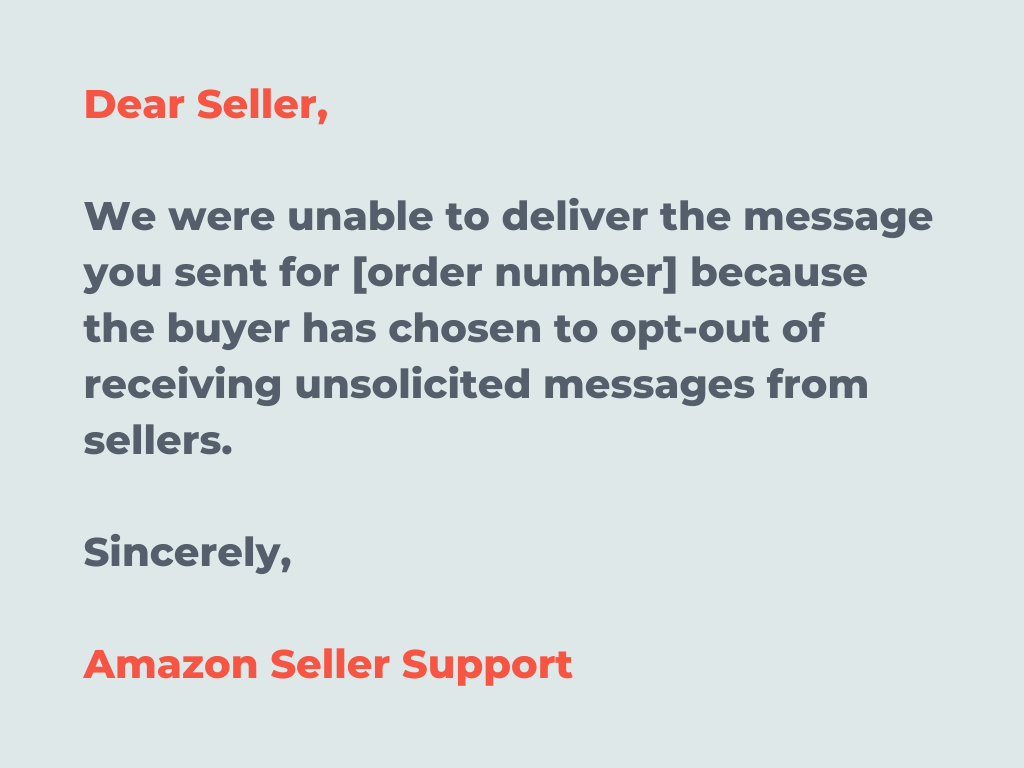Amazon generates tens of millions–possibly hundreds of millions–of visits per month. As the company controls nearly 50 percent of the ecommerce market, much of the revenue generated has been reinvested into the company, resulting in tons of alterations and improvements.
Naturally, Amazon aims to continue that growth–and those changes–across the next decade.
While it is essential that retailers keep up with the broader ecommerce trends for 2020, it is also imperative that they zero in on the more narrow category of Amazon trends for 2020 as the marketplace is one of the most important online destinations for all retailers.
Moreover, given the long reach of Amazon and Jeff Bezos, the changes the company makes have the power to send ripples through the industry. Therefore, staying abreast of what Amazon is up to is a necessity.
If your company is already profitably selling on Amazon but wants to take things to the next level, awareness of Amazon trends for 2020 is critical for reaching the next stage of success.
Ready to see how the year will unfold for Amazon and its sellers? Check out these seven Amazon trends for 2020.
Amazon Finally Tackles Fake Reviews
As powerful as Amazon is, the company has some significant problems with counterfeit products and fake reviews.
However, one near-certain trend in 2020 is that Amazon will put its full force behind ending fraudulent reviews.
While the company banned incentivized reviews back in 2016, Amazon has been diligently pursuing alternative ways to snuff out this persistent problem.
Moreover, in accordance with changes to program policies that Amazon rolled out in late 2019, the eCommerce giant has made some adjustments to the review policies for the platform.
In particular, this update zeros in on the type of language that sellers utilize in their communications with customers, stating that sellers cannot:
- Utilize the word “Important” in the subject line if it is not related to order fulfillment
- Employ “marketing or promotional messaging”
- Incentivize customers to leave or alter reviews
- Request that consumers remove or update a review
- Ask for a review or seller feedback more than once
- Include links or attachments unrelated to order fulfillment
- Feature a link to opt-out of messaging
- Show logos that display or link to the seller’s website
Additionally, with all the negative press the company has received over the past few years, cracking down on fake reviews is critical for the brand to maintain favorability among consumers. This is particularly important as the Amazon vs. Google feud continues to intensify as the search engine introduces more shopping alternatives for customers.
Some of the potential ways in which Amazon might fight this battle include placing increased importance on the Amazon Brand Registry and tracking the review velocity of products on the platform.
Nevertheless, as far as Amazon trends for 2020 are concerned, ensuring the authenticity of reviews is a prominent one to watch closely.
The End of Buyer-Seller Messaging
Amazon’s Buyer-Seller Messaging Service enables third-party sellers to directly contact consumers who have purchased from a retailer.
In 2020, there is a chance that this system may disappear. The reason for this (in addition to the company’s crackdown on fake reviews) is that Amazon wants to ensure strict control over how retailers communicate with the company’s customers.
In fact, this pattern has been playing out for some time now as, over the past several years, Amazon has made it increasingly difficult for sellers to contact shoppers who have made a purchase from them.
For instance, in 2017, Amazon enabled customers to opt-out from receiving messages, effectively blocking messages from merchants.
As a result, sellers who sent an email to a customer would receive this response from Amazon:

The next indicator that this change could be on the horizon came from the previously mentioned policy changes, which placed even stricter parameters on the language that sellers can use when sending messages to buyers. As Amazon notes: “In any communication you have with buyers (including shipping box inserts), you cannot ask them to leave a positive customer review for your product, or to leave a review only if they had a positive experience with your product. Similarly, you cannot ask only customers who had a positive experience with your product to leave a review.”
Galvanizing this Amazon trend in 2020 is the fact that the company has begun to introduce features that supplant the messaging system. The most prominent of these elements is the Request a Review button, which lets sellers click a button in the orders window to send customers a review request communication.
The fact is that Amazon aims to produce the best user experience possible. Anything that could potentially frustrate customers (such as unsolicited sellers’ emails) must be axed for the sake of satisfaction.
By allowing sellers access to the company’s customers, Amazon opens itself up to shopper manipulation and other types of damaging practices from rapacious retailers.
As far as Amazon is concerned, the easiest way to protect its customer base is to cut sellers off from reaching out to them directly. While this move may indeed hurt honest merchants on the platform, it is sure to be an effective strategy in dealing with those who are gaming the system.
The Price of Amazon Ads Increases
One of the more costly of the Amazon trends in 2020 is that the price for advertising through the platform is likely to increase.
The fact is that using Amazon Display ads and its other promotional offerings is becoming an increasingly competitive space as more and more sellers begin to leverage these features.
Part of the reason for this is Amazon’s meteoric rise in the advertising industry, attracting bigger ad budgets than many had anticipated.
As a result of the hefty ad allowances and increased levels of competition, scores of retailers are likely to see their Amazon advertising ROI get eaten into by higher costs-per-click.
However, while this Amazon trend might prove to be widespread, it is likely to be more prominently seen in highly competitive categories–like skincare products. Those selling exceptionally niche items could be saved from the price hikes.
That said, Amazon is likely to cultivate new ways to make room for the growing demand for its advertising services. The fact is that many shoppers are already turned off by the sheer number of sponsored adverts they see in the company’s SERPs. This means that the company is not likely to increase these kinds of ads and will be forced to find alternative routes.
This leads us to our next Amazon trend for 2020.
Expanding Sponsored Display Ads
In 2019, Amazon rolled out Sponsored Display, a means by which retailers could promote their products on and off the Amazon marketplace. As it stands, the program (which is still in beta) is available to “professional sellers enrolled in the Amazon Brand Registry, vendors, and agencies with clients who sell products on Amazon.”
While this may not seem super impactful, given that display advertising typically has a pretty abysmal click-through rate, what stands to elevate Sponsored Display ads in Amazon’s advertising portfolio is its retargeting abilities.
The fact is that Facebook retargeting ads and those served through Google tend to be so effective because they target users who have shown interest in a product and present them with personalized adverts. This dynamic substantially increases a seller’s likelihood of earning conversions.
Through Sponsored Display, if a shopper views a product on Amazon, they can now be served ads for that item across a variety of apps and websites. This presents Amazon sellers with a significant opportunity for increasing their eCommerce sales as consumers will have less hesitation about clicking on an Amazon advert than one from a brand with which they are relatively unfamiliar.
While advertisers can create Sponsored Display campaigns in a matter of minutes, the drawback to this ad set is the limitations placed on customization and audience targeting.
However, given that Amazon trends for 2020 point toward the company expanding this program over the next 12 months, there is a good chance that these barriers will be eliminated.
Greater Investment in Amazon DSP
Amazon DSP (which stands for Demand Side Platform) is the company’s platform for allowing sellers to programmatically purchase display and video adverts at scale while targeting optimal audiences across the Amazon marketplace, Fire TV Sticks, Kindles, IMDb.com and a slew of third-party destinations.
As it currently stands, scores of brands are leaving Amazon, many of which are looking to alternative online marketplaces like Walmart for support. To help fend off more companies fleeing the platform, Amazon trends for 2020 point toward the retailer investing in Amazon DSP to increase interest from bigger merchants looking to earn more profits from the platform.
In 2019, Amazon made several upgrades to the DSP user interface, including changes to:
- Navigation
- Bulk editing
- Custom reporting
- Creative moderation
Given that all of these updates were geared toward elevating the usability of the platform, it stands to reason that Amazon is aiming to provide a better experience and heightened campaign outcomes so that it can pull in and retain big-name brands.
Amazon Video Adverts Explode
Video marketing campaigns have become an essential element for eCommerce brands. The reason for this is that video content is extremely effective at helping to convert consumers to customers.
The reality is that a whopping 88 percent of video marketers report receiving a positive ROI from this type of content.
This is something that Amazon is looking to take advantage of in the years to follow.
Amazon launched video ads back in 2019. Amazon trends for 2020 indicate that shoppers can expect to see a lot more videos in search results soon.
When consumers search for a relevant keyword that triggers one of these adverts, the video ad is shown below the fold. However, as of right now, these promotional videos are only shown in the mobile application. However, it is expected for Amazon to expand these adverts to display on its desktop and mobile websites sooner than later.
Moreover, as they are now, video ads can direct consumers to various destinations, like product pages or an Amazon store, but they require a minimum budget of $35,000.
Given that Amazon is looking for new ways to allow retailers to advertise while still providing a stellar customer experience, Amazon trends for 2020 would indicate that video ads may come down in price to enable more sellers to get in on the action.
Amazon Stops Fulfilled by Merchant for Certain Categories
Amazon’s Fulfilled by Merchant (FBM) program allows third-party sellers to list their merchandise on Amazon as a Prime product, but instead of Amazon fulfilling the order, the seller is wholly responsible for warehousing, shipping and customer service.
While this may seem like a good deal for Amazon and merchants who have proven themselves worthy of the program, in actuality, it presents two considerable liabilities for Amazon as a company.
Firstly, Fulfilled by Merchant gives malicious sellers the opening to peddle counterfeit merchandise through other listings. Given that Amazon already has a phony product problem, this is a massive issue.
Secondly, through Fulfilled by Merchant, Amazon is unable to control the branding and messaging as it can with FBA.
While Amazon does have strict guidelines for qualifying to become an FBM seller related to performance, shipping times, packaging quality, customer service and other essential metrics, those who fail to follow the company’s guidelines can’t be penalized by Amazon, other than getting removed from the program. By that time, the damage may have already been done.
That said, Fulfilled by Merchant functionality won’t be eliminated as a whole, but Amazon will likely restrict its usage.
Amazon trends for 2020 signal that in specific categories, the company will do away with FBM. The reason for this is that FBM sellers dominate particular categories on the platform.
In the event that this prediction does not come to pass, it is almost certain that FMB retailers will see more restrictions on the types of merchandise they can sell come their way in the next year.
Given that Amazon is still (amazingly) a growing marketplace, there is still tons of potential for retailers who are willing to put in the work and keep up with Amazon trends in 2020.
Moreover, as the platform continues to see scores of new sellers pour into its marketplace, understanding Amazon SEO best practices and advertising tactics is essential for success.






Responses